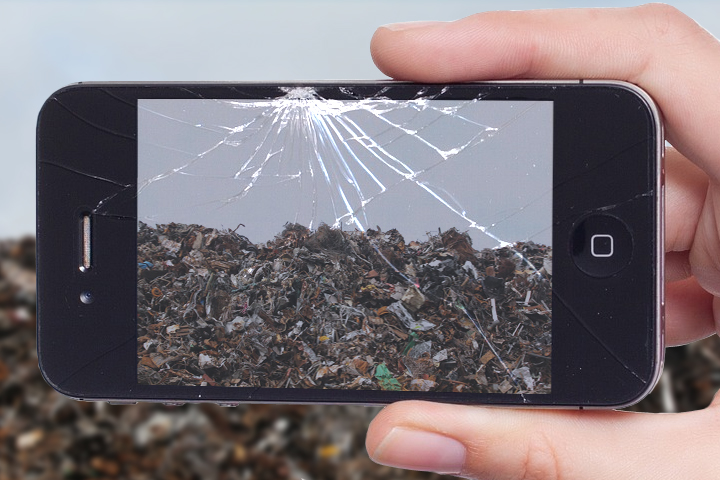Green telecoms: one man’s trash, another man’s treasure

In the second of a two-part examination on the environmental impact of the telecoms sector, we explore how businesses are making it easier for customers to do their part, including how CSPs can incentivise positive actions in customers.
Though COVID-19 is expected to lessen telecoms revenues in the short term, the pause in many parts of global industry has created an opportunity for further greening of the telecoms sector.
In fact, many are hoping that a post-COVID investment windfall will accelerate the move towards virtualised work to ensure business continuity despite continuing social distancing, changing customer demands and disruptions to supply chains.
In part 1 of our investigation into the greening of the telecoms sector, we focused on how telecoms providers are improving their power consumption and infrastructure provisions; here, we look at how the consumer-facing side of the industry is responding, including how to deal with the increasing issue of electronic waste.
Cost effectiveness
Efforts to decarbonise the economy may be seen as expensive, but, according to the New Climate Economy project, appropriate action could in fact boost the global economy by $26 trillion and create 65 million new jobs over the next ten years. In the UK, BT has reported that cutting its carbon emissions by 80% in 2016 saved £220 million, thanks to initiatives such as switching to electric vehicles, among others.
As well as the role telecoms has to play in the global decarbonisation effort, the improvements that new technologies are making in teleconferencing, virtualisation and cloud computing also reduce the need for international business travel.
Once a solution only available to large corporations, now businesses of any size can employ virtualisation for energy-intensive equipment such as servers and desktops, saving companies a lot of money, while gaining better security and easier maintenance in the process.
E-waste
Waste Electrical and Electronic Equipment (WEEE), or e-waste, is the fastest growing source of domestic waste. Currently, only 20% of e-waste is recycled.
In 2016, 44.7 million tonnes of e-waste was generated worldwide – equivalent to 4,500 Eiffel Towers – and this is expected to total over 50 million tonnes by 2021, growing at twice the rate of plastic waste. The total value of this e-waste is estimated at £50 billion a year – equivalent to the annual GDP of some countries.
China, once the world’s largest importer of international waste, stopped accepting many types of e-waste in 2017, drawing attention to the growing issue of how to dispose of gadgets with ever shorter lifespans. The world’s largest e-waste dump is now in Agbogbloshie, Ghana, where residents – including children – brave clouds of toxic smoke to sift through the digital detritus for salvageable parts.
A significant portion of this waste is composed of precious metals, ranging from gold and silver, to more dangerous metals such as palladium and cadmium which, when left to decay in landfills, can seep into soil and groundwater, bioaccumulating in flora and fauna further down the food chain. In fact, some £40 billion worth of these metals is thrown away every year, rather than recycled.
However, nearly 60% of respondents to a Royal Society of Chemistry survey in the UK said that the precious metals within their old devices would make them more likely to recycle.
Nevertheless, lawmakers are increasingly cracking down on planned obsolescence of mobile phones, with manufacturers such as Apple and Samsung being on the receiving end of hefty fines for slowing down older models. Earlier this year, a class action lawsuit in the US targeted Apple for throttling the CPU of phones without users’ permission. And while phone batteries have seen an incremental rise in charge capacity year by year, they typically only last 500 to 600 charge cycles.
Younger, more tech-savvy customers are willing to pay more for sustainable products; one such example being the Fairphone 3, made with recycled precious metals, Fairtrade certification and the only 10/10 iFixit score for repairability. However, with 5G’s ongoing rollout, many consumers will most likely ditch their current handsets for newer, compatible models.
Legislation is now being pushed targeting right to repair rules that will encourage customers to return salvageable devices and promote a “circular economy” of equipment. Many currently choose not to recycle, citing fears over data security compromise and the desire to keep a spare device handy, among other reasons.
There’s a long way to go in terms of handset recycling though; in a decade of running its recycling scheme, O2 has recycled 3 million handsets, but with 34 million subscribers getting a new phone every three to five years (on average) – and many still upgrading their device annually – it’s safe to assume that the bulk of redundant phones end up at the bottom of drawers or stuck in attics at the end of their lifecycles.
Though customers are able to return an old device with various firms for a lump sum, actual numbers have been declining since the late-2000s, despite many independent organisations offering recycling services – particularly charities such as Oxfam. Larger operations in the UK provided by supermarkets such as Asda and Sainsbury’s have long been inactive, with only Tesco’s service still notionally running (albeit suspended as of July 2020 due to COVID).
Would customers respond better to additional perks through reward schemes à la O2 Priority or Vodafone VeryMe? Or better still a reduction in monthly fees from their provider?
There is no doubt that CSPs could, and should, be doing more to incentivise their customers to recycle old devices. This needs to be front and centre in the purchase or renewal process, not an afterthought buried in the depths of their websites.
Contact us now to find out how Cerillion’s Enterprise BSS/OSS suite can help CSPs to package new offers and reward their customers – and save the planet in the process.

